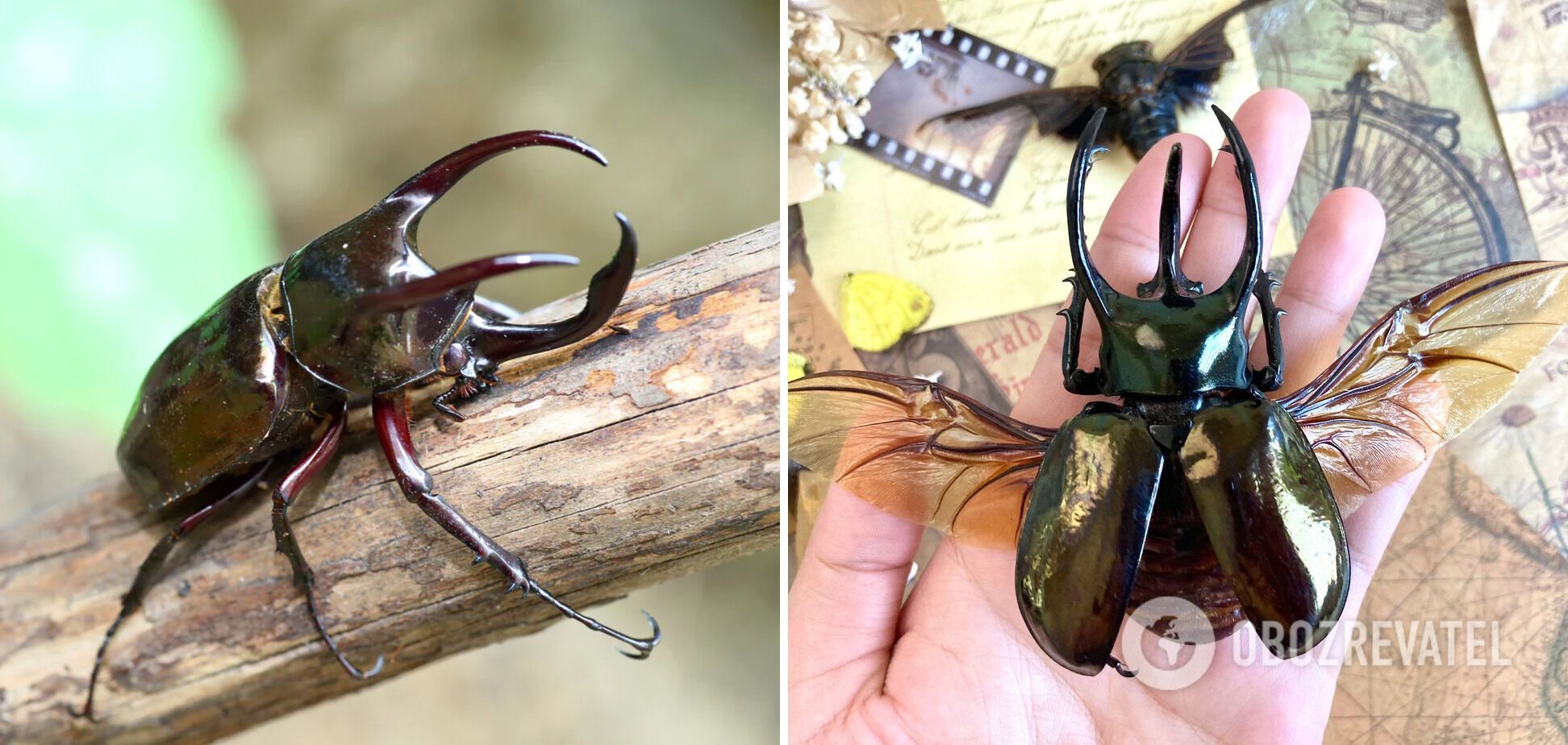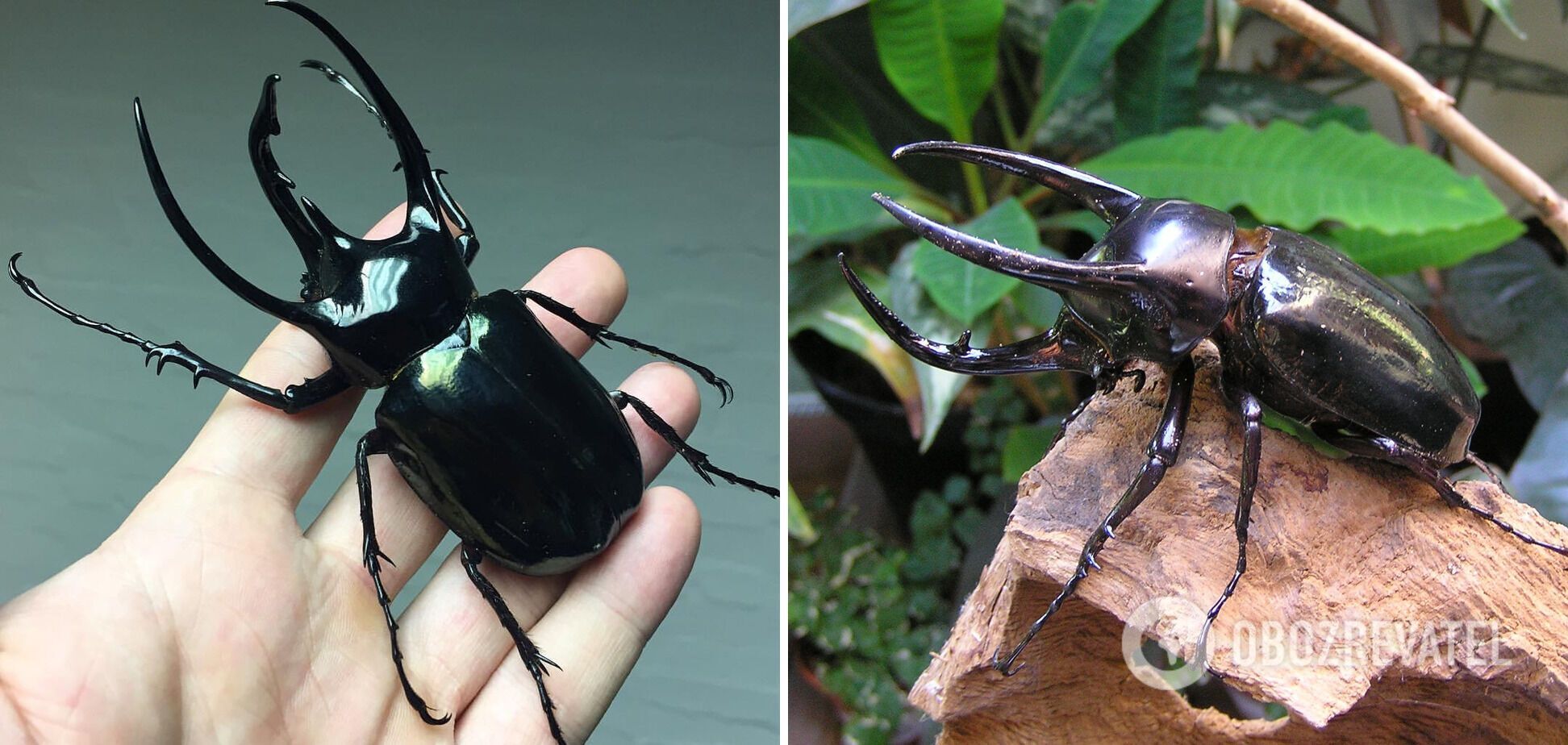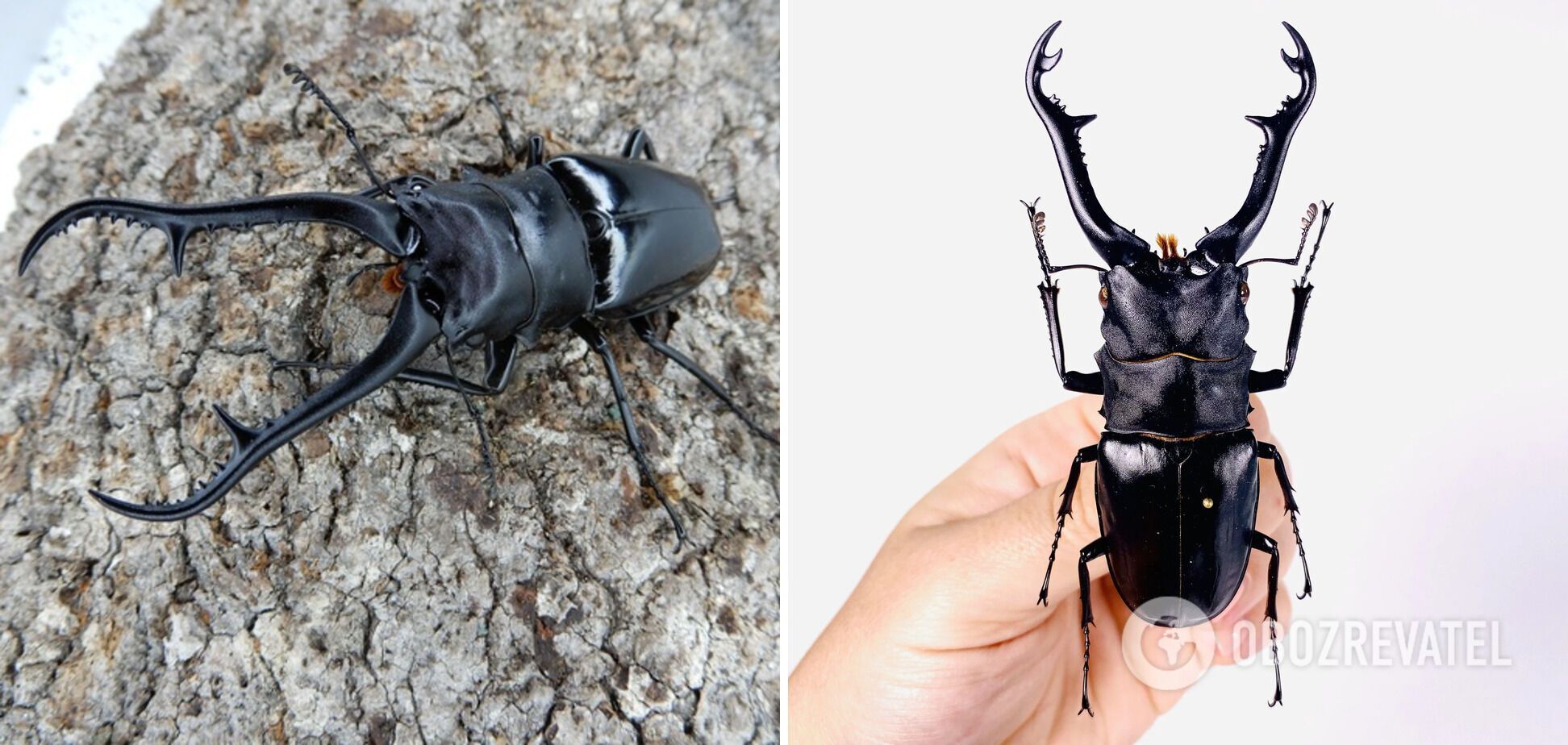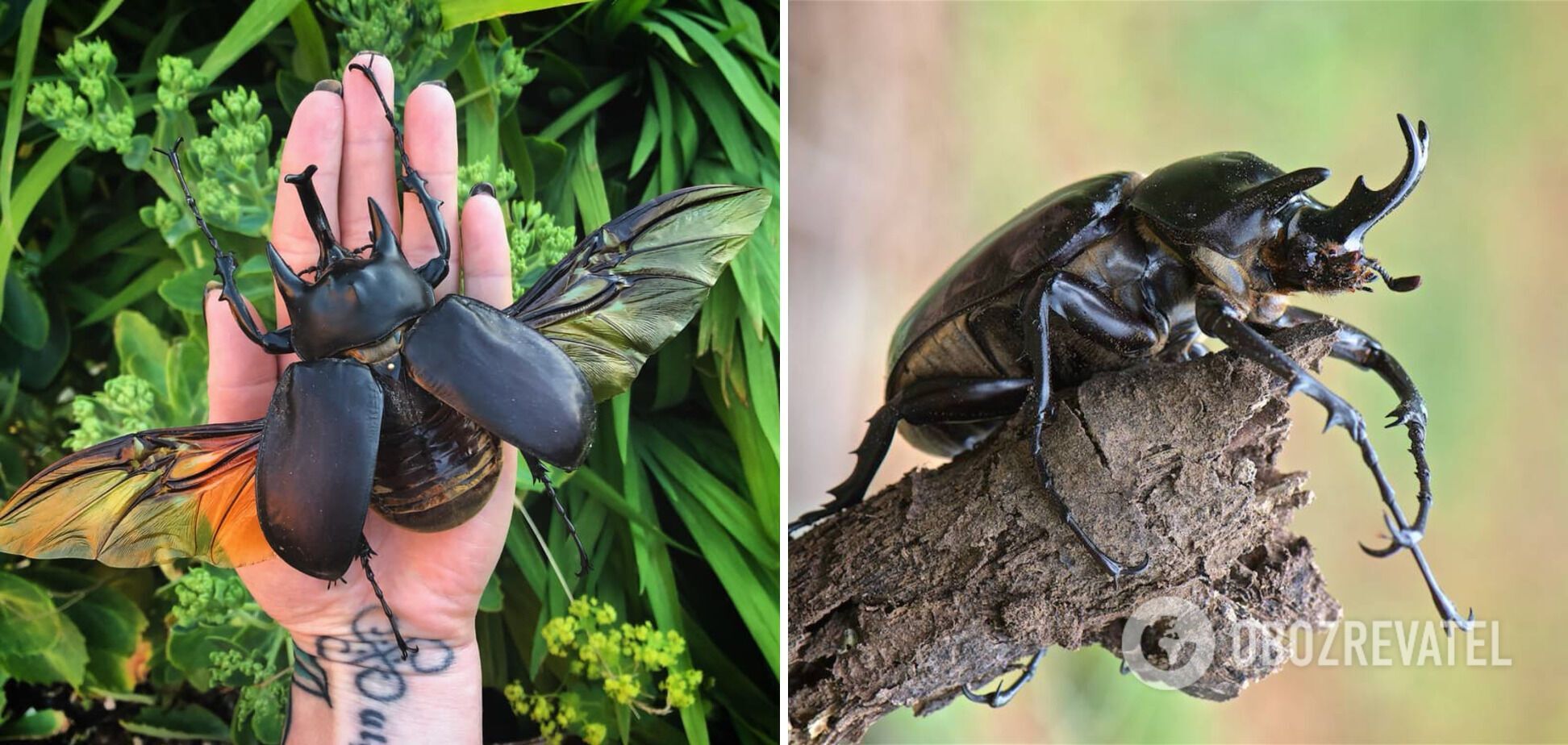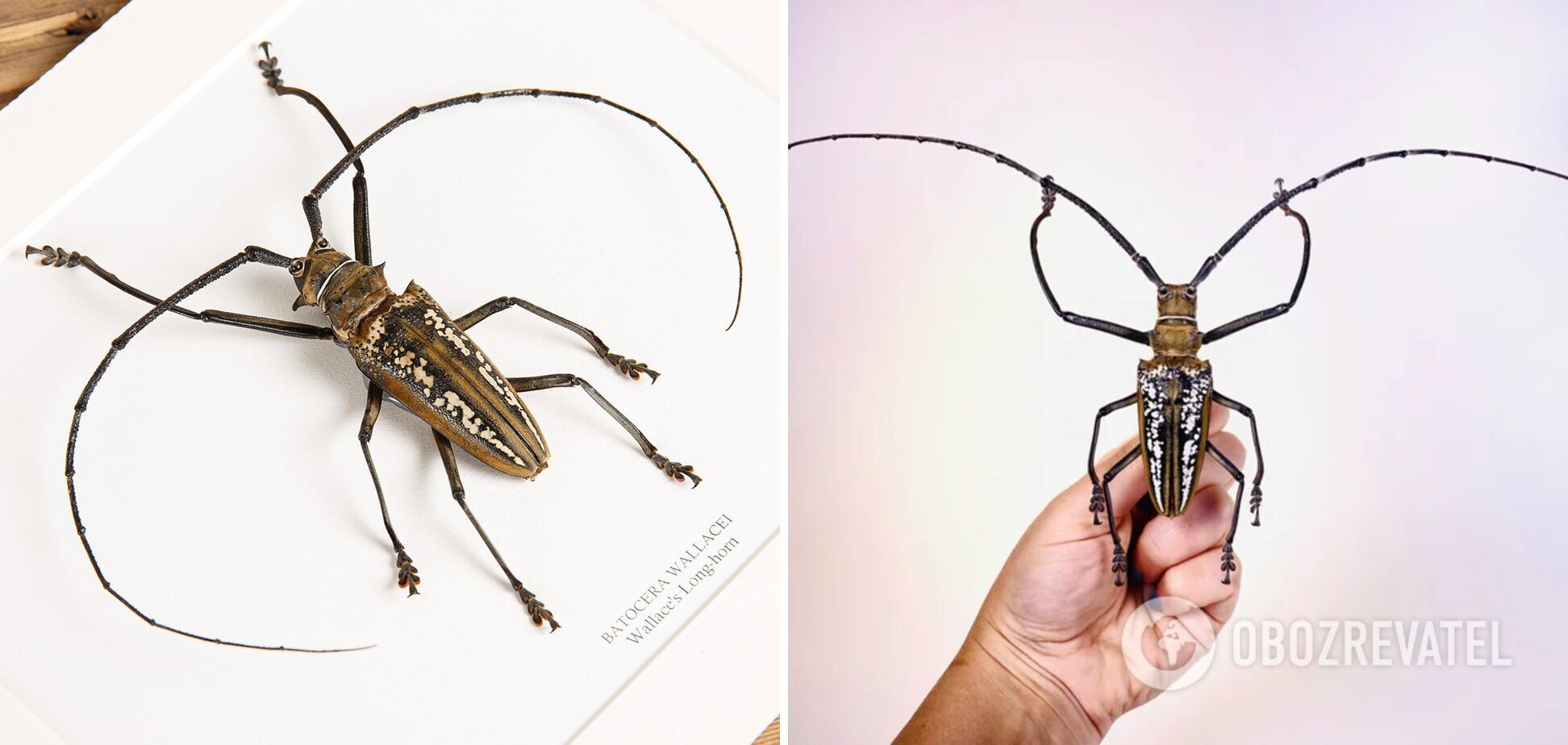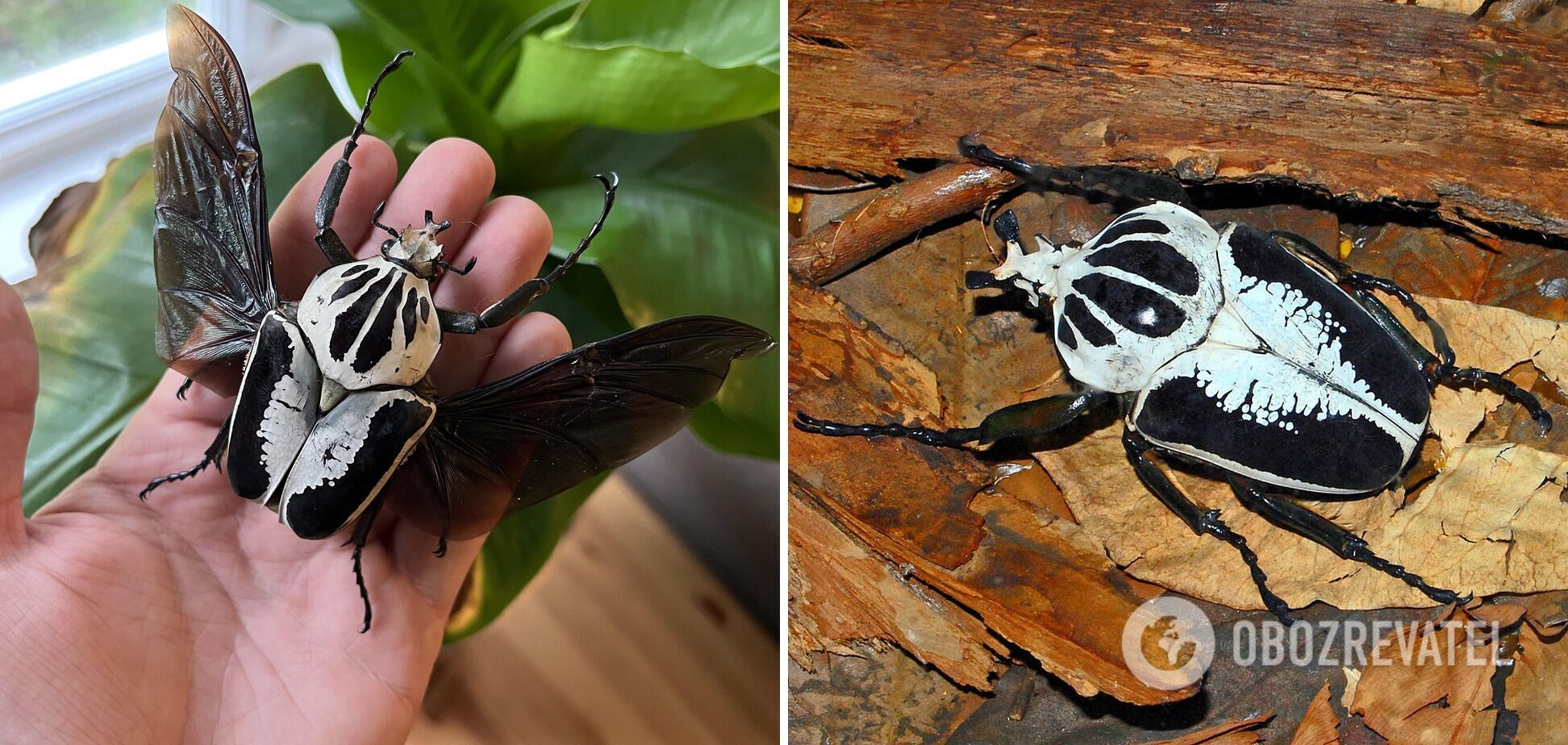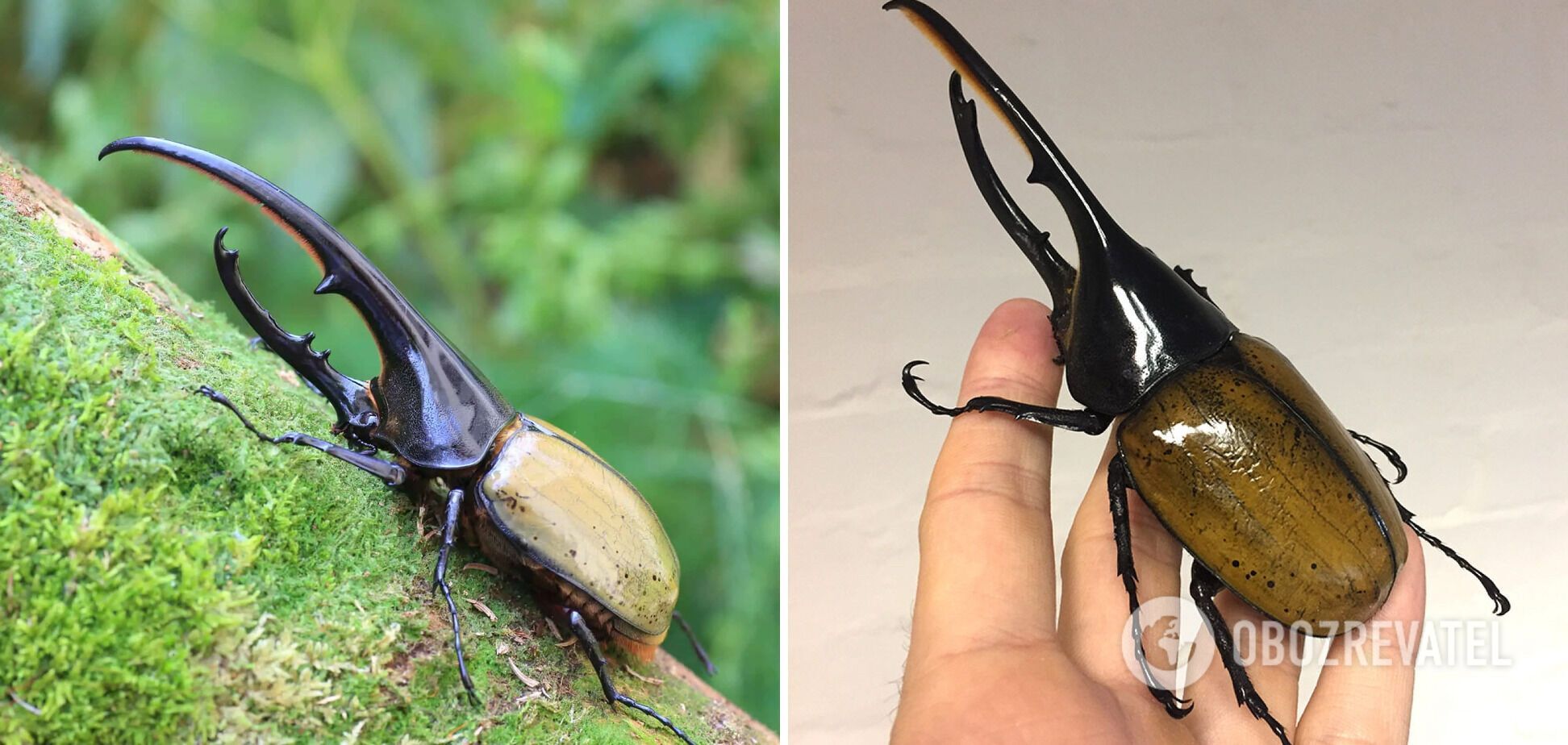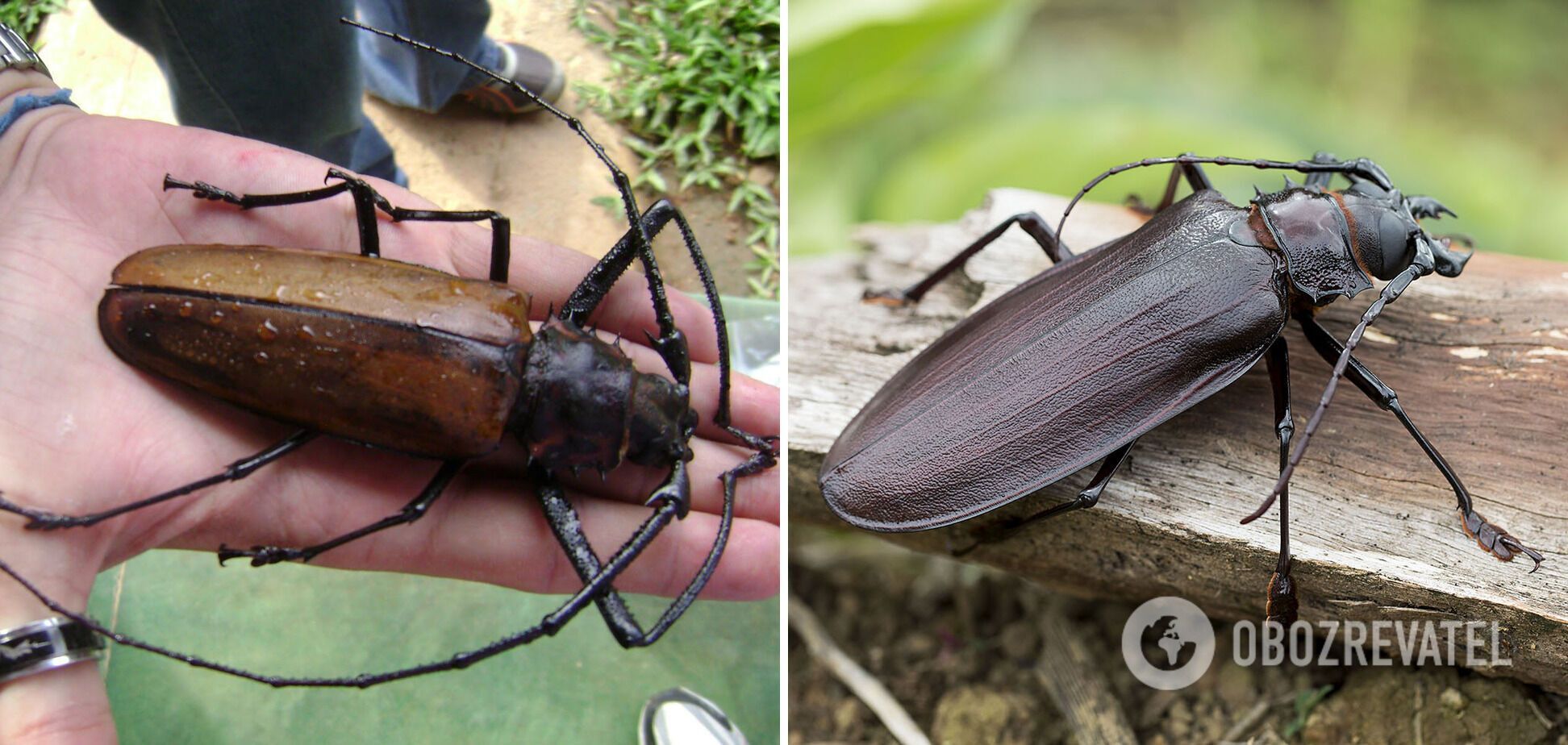Life
What the world's biggest beetles look like: top 10 species
Beetles or hard-winged as called in science are one of the most numerous groups of living creatures on the planet. Scientists know more than 400,000 of their species. Among them there are both very tiny creatures and real giants.
OBOZREVATEL tells about a dozen of such giant beetles. Some of them can be found even in Ukraine.
Atlas beetle (Chalcosoma atlas)
The species gets its name in honor of the ancient Greek titan Atlas. It is the largest species of the Platypus family. The body length of the Atlas beetle ranges from 4-11 cm, with males noticeably larger than females. The species occurs throughout most of Southeast Asia.
Caucasian beetle (Chalcosoma chiron)
This is another giant member of the Platypus family. Moreover, it is related to the Atlas beetle. The body size of Caucasian beetles is 8-12 cm for males and 5-6.3 cm for females. Despite its name, the Caucasian beetle can be found not in the Caucasus. It lives in Malaysia and Indonesia.
Giraffe stag beetle (Prosopocoilus giraffa)
Another name for this species is the giraffe stag beetle and it is the largest member of the Hornbill family. The head of the creature is decorated with expressive branched horns. The length of the body can reach 12 cm, almost half of which is just on the horns. They live in the humid forests of Asia, mainly in Vietnam, Thailand, India and the Philippines.
Actaeon beetle (Megasoma actaeon)
This South American inhabitant is characterized by a record body weight. One adult specimen of the Actaeon beetle weighs about 150 grams, while the weight of its larvae reaches 240 grams. This giant grows to about 5-12 cm, with males much larger than females. Particularly because females lack horns.
Wallace's long-horn beetle (Batocera wallacei)
The body length of this creature can reach 21-24 cm. Of this, only 6-8.5 cm is the actual body of the beetle. The rest is due to the long, massive antennae. The Wallace beetle can be spotted in Papua New Guinea, Indonesia and some parts of Australia.
Elephant beetle (Megasoma elephas)
Once again a member of the Platypus family. Males grow up to 12 cm in length, while females up to 7 cm. The weight of such a beetle can be up to 35 grams. Golden-colored hairs that grow all over the body help to distinguish these creatures from other congeners. In fact, their shell is black or brown. Elephant beetles live in the rain forests of South and Central America.
Stag beetle (Lucanus cervus)
This is the largest beetle that can be found in Ukraine. In comparison with deer, as well as other more than 1000 species, this hornbill is known for its huge jaws, similar to antlers. They are much more pronounced in males. The length of its body reaches 7.5 cm, although the common hornbill can grow even more. This figure takes into account the horns, which can make up almost half of the entire size. The common hornbill inhabits Europe, West Asia and can be found in North America.
Goliath beetle (Goliathus regius)
The average body length of Goliath beetle reaches 8.5-9.6 centimeters, but they can grow up to 11-12 centimeters. The creature looks quite massive and weighs about 100 grams. With its horn, present only in males, it can wound noticeably. This fighter lives in equatorial Africa and prefers to live in trees rather than on the ground.
Hercules beetle (Dynastes hercules)
A creature up to 18 cm long (these are males, the average size of a female is 8 cm) is very fond of moving by flying. This makes it one of the largest flying insects. However, don't be afraid of such "helicopter", as Hercules beetles feed on wood and fruits. They live in Central and South America, as well as on the Caribbean islands.
Titan beetle (Titanus giganteus)
The size champions among beetles are Titans. The body of the creature has a length of 12-17 cm. Meeting this giant can be very unpleasant, as its mandibles are capable of cutting human skin. It is not surprising, as it can break even small branches. Another feature of the species is the ability to hiss. These beetles scare away predators in such a way. As for the habitat, they live in the tropical forests of Bolivia, Peru, Colombia, Ecuador and Brazil.
Earlier OBOZREVATEL shared how to save yourself from the consequences of the insect or bee sting.
Subscribe to OBOZREVATEL channels in Telegram, Viber and Threads to be aware of the latest events.







